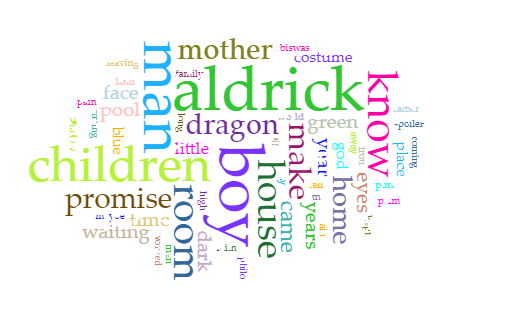Thematic
Navigation Links
- Prologue
- Methodology
- Comparison: Male and Female Authors
a. Thematic Overview: Cirrus
b. TexturalArc
i. Male TextualArc
ii.Female TextualArc - Bibliography
Prologue
In the visualization of themes, an overview of previously published works on thematic differences between male and female authors was given. Interestingly, the author of the article “Gender and Literature” by Pázámy Péter Catholic University argued that the gender roles of the early 18th and 19th centuries would have influenced the behavior, morality, and feelings of women, thereby impacting their literary pieces. However, the Femist Movement in the 1970s in the Caribbean would have reduced these predetremined gender roles and gender identity, thus having less of an effect on these authors.
In the Gender Split, West Indian Literature 1961-1990, a dataset of common themes in Caribbean literature was created for analysis. These themes include:
- Adolescence
- Classism
- Colonialism
- Coming of age
- Education
- Family relationships (Mother-daughter relationships)
- Gender and Sexuality
- Identity
- Migration
- Mythology and folk
- Nature
- Neo-colonialism
- Politics
- Postcolonialism
- Poverty
- Power
- Racism
- Slavery
- Young boys growing up
- Young girls growing up
This exhibit will critically compare and contrast the themeatic expression of male and female authors, particularly in books before the Femist Movement, in the early periods of the social movement and decades after.
Methodology
To create this exhibit, a sample of 8 literary pieces that were included in the project, Gender Split 1961-1990, were chosen at random.
From these literary pieces, samples of approximately 6-7 pages were included in Voyant-Tools for distant reading purposes.
This sample selection process was advised by Schuyler K. Esprit, PhD, who was also the director of Create Caribbean Research Institute.
“Distant reading” is a computational text mining method used in Digital Humanities to analyze large amounts of literary pieces and provide microanalytics such as quantitative data and cultural and historical criticism.
The sample of literary pieces:
Authored by males
- V.S Naipaul : A House for Mr Biswas (1961)
- Earl Lovelace : Dragon Can’t Dance (1979)
- Derek Walcott: Fortunate Traveller (1981)
Authored by females
- Jean Rhys: Wide Sargasso Sea (1966)
- Merle Hodge: Crick Crack, Monkey (1970)
- Phyllis Shand Allfrey : The Orchid House (1982)
- Dionne Brand: In Another Place, Not Here (1996)
- Jamaica Kincaid: The Autobiography of my Mother (1996)
Comparison: Male and Female Authors
Thematic Overview: Cirrus
Using Voyant Tools, Cirrus, a word cloud that visualizes the top frequency words of a corpus was created to determine the thematic elements present in male and female authors’ literary pieces.
Cirrus - Male Authors

Analysis
From the cirus, some of the keywords are “dragon” and “costume”. Literary pieces such as Earl Lovelace’s “Dragon Can’t Dance” (1979) center around the life of Aldrick Prospect, a man who spends the entire year recreating his dragon costume for Carnival. From the dataset of themes for this project, it can be concluded that the male authors from 1961-1990 explored themes such as “identify”, particularly the unique identity of the Caribbean. Carnival is an ancestral celebration of Caribbean experience and identity.
Furthermore, the Caribbean carnival first started to take shape in 1834 with the end of slavery. Therefore, male literary works from 1961–1990 explore some postcolonial subject matters through the description of carnival masquerades, music, and dance, which are symbolic of the native culture expressed by enslaved people.
Moreover, more common words in this word cloud include “boy” and “children”, which allude to themes such as “young boy growing up” and “adolescents” as well as the corpus terms “mother” and “family,” which would signal “family relationships” being explored in male-authored texts.
Cirrus - Female Authors

Analysis
From this cirus, some of the keywords include, “tante”, “uncle”, “mother” which symbolize that these literary pieces written by female authors explore themes such as family relationships.
Furthermore, thes references made to the surroundings such as “street”, “road”, “town” and “tree”. As such, it can be deduced that female authors publishing words such as 1961-1990 expressed themes such as nature.
Additionally, the reference of “yu”, which is the colloquial team for “you”. These terms or “slangs” are usually associated with speakers who are of lower socio-economic status and class, since these individuals have lower levels of education.
TexturalArc
Voyant’s TextualArc feature is a visualization of the terms in a document that includes a weighted centroid of terms and an arc that follows the terms in document order.
The sample texts included in the Gender Split, 1961-1990 will be represented on the perminter of a cricle, starting at the top and looping around clockwise. Each occurrence of a term pulls the term toward its location on the perimeter and the position of the term label is the mean of these forces (or weighted centroid).
Each sample is “read” from start to finish and the occurrences of the currently read term are shown by lines to the perimeter.
Users of this project can also hover over any term to see its occurrences on the perimeter, and interact with the different male and female authored samples included in this exhibit.